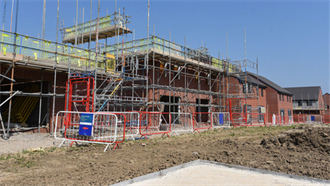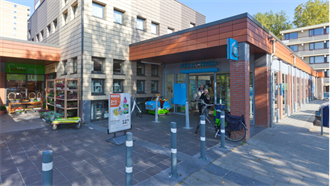A first-of-its-kind study into the German senior living market by Mozaïc Asset Management, an asset manager specialised in healthcare real estate in Europe, and Bonard, a global market research firm for rented residential asset classes, confirms the significant shortage of assisted living for elderly people.
This is the second in a series of reports by the two firms which address the need for comprehensive, standardised and robust data on the fast-growing senior living asset class, thus giving the market a new level of transparency and allowing for a better investment environment. The aim of the report is to provide a demand-supply analysis and up-to-date insight into senior living in Germany at the national level, with a closer look into the top 20 locations across Germany. The initiative brings much-needed data and context for the segment which is facing growing pressure due to limited stock.
In a Q&A interview with PropertyEU, Julia Momotiuk, senior research manager at Bonard, and Frédéric Dib, president of Mozaic Asset Management, France, discuss the key findings of the report.
PropertyEU: Why did Bonard and Mozaic choose to focus on the German senior living sector for its report?
Momotiuk: The German report is the second study to be produced in close collaboration with Mozaïc AM. The first one was dedicated to the French market. As one of the biggest markets in terms of demand, Germany drives the interest of investors to the perspectives of senior living as an asset class.
Moreover, we believe senior housing is still under-documented, with different definitions and regulations making it difficult for investors to get a clear picture of the market. That’s why we’ve decided to produce a series of reports, and the study of the German market is one of them. We are aiming to cover more countries next year (the UK and the Netherlands) in a bid to make the senior housing asset class in Europe more transparent.
PropertyEU: Can you highlight some key findings for investors in this report?
Momotiuk: There are almost 10 million seniors above 75 years old in Germany and that number is growing by 3% every year. There are almost 65,000 assisted living apartments in the top 20 cities in Germany. Meanwhile, on the supply side, there are 22,000 apartments in the top 20 cities, which is insufficient to cover existing demand. The provision rate is about 4% for all types of assisted living combined and about 1.1% for private commercial residences only.
PropertyEU: Which finding stands out most?
Momotiuk: The average provision rate of assisted living facilities in the top 20 German cities falls slightly below 4%. The pipeline in the top 20 cities is not even enough to keep the provision rate at the current low level. The projected increase in the number of people aged 75+ will outpace the rate at which new residences are provided.
Given the population’s high level of disposable income, there is certainly room for supply to grow in the coming years.
PropertyEU: How are developers and investors dealing with the scarcity and high cost of prime land in German cities when developing senior living facilities?
Momotiuk: The current trend among investors is to look for opportunities to acquire existing facilities for further renovation or conversion into assisted living establishments. Also, the majority of the projects in the pipeline will be developed outside of the big cities, where the shortage of available land plots is a very sensitive issue.
For example, more than 16,300 assisted living apartments in 377 residences are being built or planned across Germany, of which only 3,142 (20%) will be located in the biggest cities.
PropertyEU: How do yields in German senior living compare with other asset classes in the region?
Dib: German senior living yields have historically been driven by private individual investors’ demand for investment products catering to savings/retirement strategies, which are in high demand in Germany.
For this reason, yields have traditionally been about 100 bps lower than those for healthcare real estate. Because of recent yield compression, this gap has narrowed to about 50 bps. As yields in the German real estate market as a whole have gone down as well, senior living is still trading at a small premium to office or residential, by between 50 to 100 bps.
PropertyEU: Given the forecast shortage of senior housing, are there any incentives for private investors to enter this market?
Dib: The overriding incentive for investors is that the market is still very dynamic with many opportunities and scope for further yield compression as the market matures.
PropertyEU: Are there any significant barriers for investors to consider when looking for opportunities?
Dib: As with all developing markets, the players are not all established and not all models will be successful so it is important to partner with experts who know the market well and can analyse each opportunity properly as many elements need to be factored in when considering projects.
A copy of the full German Senior Living Market Report can be downloaded here


































